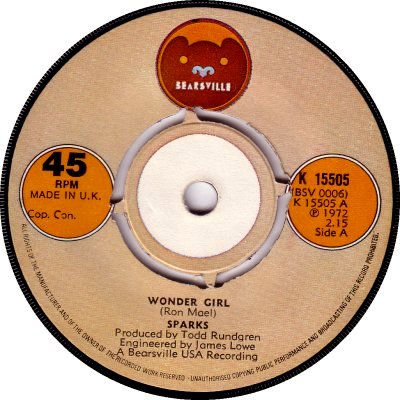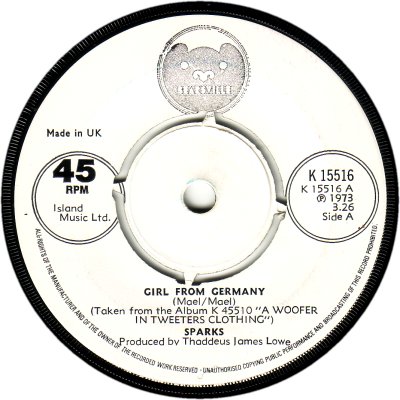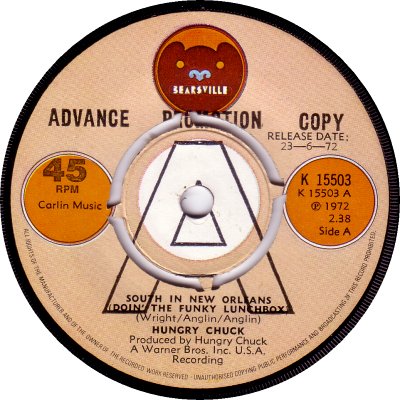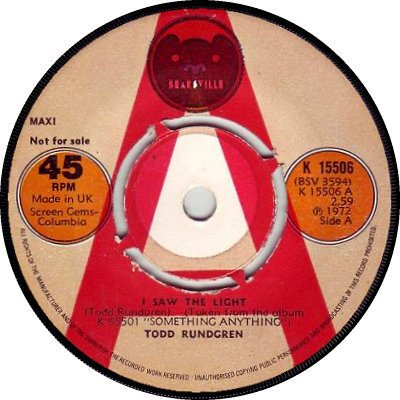








American. Bearsville was owned by Albert Grossman, and was operative in the USA from 1970 to 1983. Todd Rundgren was the label's main producer and its best-known artist; he never enjoyed the same success in Britain that he did in the States, but he gave Bearsville a hit here in 1973 with 'I Saw The Light'. The company had to wait until 1979 for its next chart success, which came in the shape of Randy Vanwarmer's, 'Just When I Needed You Most' (WIP-6516). One minor point of interest is that Bearsville issued the first records by Sparks, who went on to enjoy worldwide success with other companies. For most of the decade the label was part of the WEA group, singles being listed in their own K-15500 series (1). March 1979 saw that agreement coming to an end and Bearsville switching to Island under a licensing deal; from then on its singles shared Island's own WIP-6000 numbers. The label design remained essentially unchanged, but there were variations in the typeface and in the placing of various credits. From February 1975 a small hollow 'A' appeared on the appropriate side of the record, as it did on most of the other WEA labels (2), and in March 1977 the perimeter credits were changed, a reference to WEA appearing at the bottom (3). When the company moved to Island the words 'Licensed to Island Records Ltd' replaced the WEA reference (4). The white-labelled Sparks single (5) is an oddity: standard brown-labelled ones exist, but white ones seem to be far more common. There's nothing on the white label to suggest a promo, so perhaps there was just a shortage of the coloured sort. Manufacture was by CBS during the WEA era, with distribution by the joint CBS / WEA facility until WEA set up its own warehouse and, in 1976, undertook the distribution of its own family of labels. Promos initially were in the Pye style, a relic of WEA's previous link with that company (6), but after the release of 'Wonder Girl' by Sparks (K-15505) they took on the usual CBS-family-promo appearance and bore a large solid or - more usually - hollow 'A' (7, 8). Promos from the Island era were marked in the current Island way, with a big black central 'A' (9). The discography below only covers the 1970s. Some of the gaps, at least, are due to the numbers being used for overseas releases.
('Both Sides Now'; www.bsnpubs.com)



Copyright 2008 Robert Lyons.

